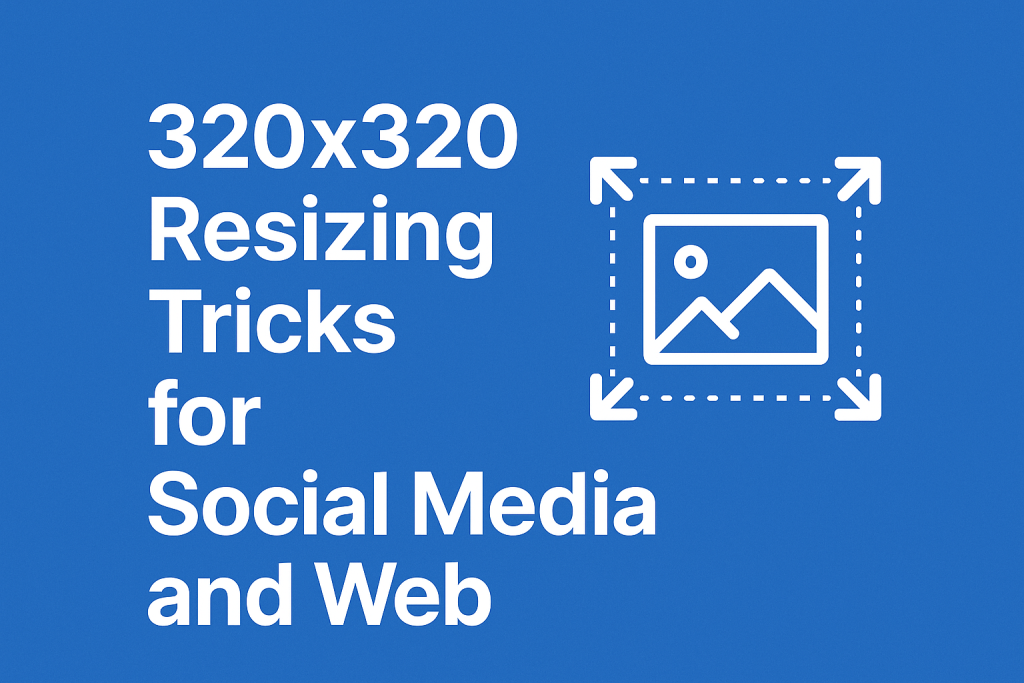When it comes to designing for social media and the web, having perfectly sized images can make or break your visuals. A 320×320 image converter is one of the simplest yet most effective tools for resizing photos without losing quality or wasting time. Whether you’re creating profile pictures, app icons, or web graphics, mastering 320×320 resizing can save you from blurry results and stretched proportions.
In this guide, we’ll share practical tricks for using a 320×320 image converter effectively and avoiding common mistakes that can ruin your images.

Why 320×320 Pixels Are Perfect for Social Media
Square images are everywhere—Instagram posts, Facebook profile pictures, and even Pinterest thumbnails often require square dimensions. The 320×320 pixels size is especially useful for these purposes because it balances file size and visual clarity.
If you’ve ever struggled to make image 320×320 without distortion, you know how frustrating it can be. Using a 320×320 converter ensures your images retain their original aspect ratio and stay crisp across all platforms.
Trick #1 – Use a Reliable 320×320 Image Converter for Clear Results
Not all image editing tools are created equal. Some basic editors compress your photos too much, while others can leave them pixelated. A dedicated 320×320 image converter like 320×320 Image Converter is specifically designed to handle resizing while preserving quality.
With tools like this, you can easily upload your file, set the dimensions to 320×320 pixels, and get a ready-to-use image in seconds.
Trick #2 – Optimize Your Images Before You Convert
Before you resize, take a moment to clean up your image. Cropping out unnecessary space, adjusting brightness, and improving contrast will make your resized image stand out. Once your edits are complete, use a trusted tool to convert image to 320×320 without losing those enhancements.
Trick #3 – Avoid Compression Loss When Using a 320 x 320 Pixels Converter
When working with web images, smaller file sizes are key for faster load times. But over-compressing can lead to noticeable quality loss. A 320 x 320 pixels converter with built-in optimization features strikes the perfect balance, giving you lightweight yet high-quality images suitable for any platform.
Trick #4 – Test Your 320×320 Pixels Images on Different Devices
Even if your image looks great on a desktop monitor, it might not display the same way on mobile. Always preview your 320×320 pixels images on multiple devices to ensure text remains legible and visuals are sharp. Tools that support batch testing can speed up this process.
Bonus Tip – Batch Resize Multiple Images with a 320 x 320 Converter
If you’re a social media manager or run an e-commerce store, resizing dozens of images individually can be a nightmare. Use a 320 x 320 converter that supports batch resizing to process multiple files at once. This trick saves time and ensures consistency across all your visuals.
Final Thoughts
Using a 320×320 image converter is one of the easiest ways to keep your images clean, professional, and optimized for the web. Whether you’re preparing profile pictures, website thumbnails, or mobile app icons, these tricks will help you avoid blurry results and deliver high-quality visuals every time.
Start applying these tips today with tools like the ResizeHood 320×320 Image Converter and see how effortless resizing can be.